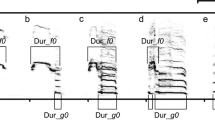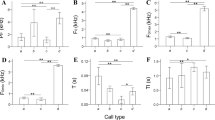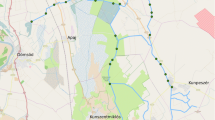Abstract
Vocal individuality provides a method of personalization for multiple avian species. However, expression of individual vocal features depends on necessity of recognition. Here we focused on chick vocalizations of demoiselle, Siberian and red-crowned cranes that differ by their body size, developmental rates and some ecological traits. Cranes are territorial during summer, but gather in large flocks during autumn and winter. Nevertheless, parents keep feeding their chicks, even on winter grounds, despite the potential of confusing their own and alien chicks. Here we aimed to compare expression of individuality and sex in calls of three crane species between solitary and gregarious periods of a chick’s life, and between species. We found significant individual patterns of acoustic variables in the calls of all three species both before and after fledging. However, only red-crowned crane chicks increased expression of individuality significantly after the fledging. Also, we found that chicks of all three species significantly increased occurrence of non-linear phenomena, i.e., irregular oscillations of sound-producing membranes (biphonations, sidebands, and deterministic chaos), in their calls after fledging. Non-linear phenomena can be a way of increasing the potential for individual recognition as well as avoiding habituation of parents to their chicks’ calls. The older chicks are, the less their parents feed them, and chicks benefit from keeping the permanent attention of their parents in the course of early ontogeny.





Similar content being viewed by others
References
Archibald GW (1976) The unison call of cranes as a useful taxonomic tool. PhD thesis. Cornell University, Ithaca
Archibald GW, Lewis JC (1996) Crane Biology. In: Ellis DH, Gee GF, Mirande CM (eds) Cranes: their biology, husbandry and conservation. Int Crane Found ICF, Baraboo, pp 1–31
Aubin T, Jouventin P (1998) Cocktail-party effect in king penguin colonies. Proc R Soc Lond 265:1665–1673
Aubin T, Jouventin P (2002) How to vocally identify kin in a crowd: the penguin model. Adv Study Behav 31:243–277
Aubin T, Jouventin P, Hildebrand C (2000) Penguins use the two-voice system to recognize each other. Proc R Soc Lond 267:1081–1087
Beecher MD, Beecher IM, Lumpkin S (1981a) Parent-offspring recognition in bank swallows (Riparia riparia): I. Natural history. Anim Behav 29:86–94
Beecher MD, Beecher IM, Hahn S (1981b) Parent-offspring recognition in bank swallows (Riparia riparia): II. Development and acoustic basis. Anim Behav 29:95–101
Bourgeois K, Cure C, Legrand J, Gomez-Diaz E, Vidal E, Aubin T, Mathevon N (2007) Morphological versus acoustic analysis: what is the most efficient method for sexing yelkouan shearwaters Puffinus yelkouan. J Ornithol 148:261–269
Bragina EV, Beme IR (2007) The sexual and individual differences in the vocal repertoire of adult Siberian cranes (Grus leucogeranus, Gruidae). Zoologichesky Zhurnal 86:1468–1481 [In Russian]
Bragina EV, Beme IR (2010) Siberian crane duet as an individual signature of a pair: comparison of visual and statistical classification techniques. Acta Ethol 13(1):39–48
Bragina E, Beme I (2013) Sexual and individual features in the long-range and short-range calls of the white-naped crane. Condor 115(3):501–507
Budde C (2001) Individual features in the calls of the grey crowned crane Balearica regulorum gibbericeps. Ostrich 72:134–139
Carlson G, Trost CH (1992) Sex determination of the whooping crane by analysis of vocalizations. Condor 94:532–536
Cavanagh PM, Ritchison G (1987) Variation in the bounce and whinny songs of the eastern screech-owl. Wilson Bull 99(4):620–627
Cure C, Aubin T, Mathevon N (2009) Acoustic convergence and divergence in two sympatric burrowing nocturnal sea birds. Biol J Linn Soc 96:115–134
Falls JB (1982) Individual recognition by sounds in birds. In: Kroodsma DH, Miller EH (eds) Acoustic communication in birds, vol 2. Academic Press, New York, pp 237–278
Fitch WT (1999) Acoustic exaggeration of size in birds via tracheal elongation: comparative and theoretical analyses. J Zool 248:31–48
Fitch WT, Hauser MD (2002) Unpacking “honesty”: vertebrate vocal production and the evolution of acoustic signals. In: Simmons A, Fay RR, Popper AN (eds) Acoustic communication. In: The Springer handbook of auditory research. Springer, Berlin, pp 65–137
Fitch WT, Kelley JP (2000) Perception of vocal tract resonances by whooping cranes Grus americana. Ethology 106:559–574
Fitch WT, Neubauer J, Herzel H (2002) Calls out of chaos: the adaptive significance of nonlinear phenomena in mammalian vocal production. Anim Behav 63:407–418
Frommolt KH (1999) Sidebands – facts and artifacts. Bioacoustics 10(2–3):219–224
Griffiths R, Double MC, Orr K, Dawson R (1998) A DNA test to sex most birds. Mol Ecol 7:1071–1075
Herting BL, Belthoff JR (2001) Bounce and double trill songs of male and female western screech-owls: characterization and usefulness for classification of sex. Auk 118(4):1095–1101
Insley SJ, Paredes R, Jones IL (2003) Sex differences in razorbill Alca torda parent–offspring vocal recognition. J Exp Biol 206:25–31
James PC, Robertson HA (1985a) The calls of male and female Madeiran storm-petrels (Oceanodroma castro). Auk 102:391–393
James PC, Robertson HA (1985b) Sexual dimorphism in the voice of the little shearwater Puffinus assimilis. Ibis 127:388–390
Johnsgard PA (1983) Cranes of the world. Indiana University Press, Bloomington 257 pp
Jones IL, Falls JB, Gaston AJ (1987) Vocal recognition between parents and young of ancient murrelets Synthliboramphus antiquus (Aves: Alcidae). Anim Behav 35:1405–1415
Kasirova TA, Volodin IA, Volodina EV, Kashentseva TA, Beme IR (2005) The structure and occurrence of biphonic calls in chicks of the Siberian crane (Grus leucogeranus) (In Russian). Ornithologia 32:97–104
Klenova AV, Volodin IA, Volodina EV, Kashentseva TA (2005) Sexual differences in whistling calls under discomfort in red-crowned crane chicks (Grus japonensis) (In Russian). Ornitologia 32:105–111
Klenova AV, Volodin IA, Volodina EV (2007) The vocal development of the red-crowned crane Grus japonensis. Ornithol Sci 6:107–119
Klenova AV, Volodin IA, Volodina EV (2008) Duet structure provides information about pair identity in the red-crowned crane (Grus japonensis). J Ethol 26(3):317–325
Klenova AV, Volodin IA, Volodina EV (2009) The variation in reliability of individual vocal signature throughout ontogenesis in the red-crowned crane Grus japonensis. Acta Ethol 12(1):29–36
Klenova AV, Volodin IA, Volodina EV, Postelnykh KA (2010) Voice breaking in adolescent red-crowned cranes (Grus japonensis). Behaviour 147(4):505–524
Klenova AV, Goncharova MV, Bragina EV, Kashentseva TA (2014) Vocal development and voice breaking in demoiselle cranes (Anthropoides virgo). Bioacoustics 23(3):247–265
Kolesnikova Y, Klenova A (2011) Individuality in juvenile calls of four colonial sea bird species (Alcidae, Charadriiformes). In: Fusani L, Coppack T, Strazds M (eds) Proceedings of 8th conference of the European Ornothologists’ Union. Riga, Latvia, p 199
Krebs JR, Dawkins R (1984) Animal signals: mind-reading and manipulation. In: Krebs JR, Davies NB (eds) Behavioural ecology: an evolutionary approach. pp 380–402
Lavenex PB (1999) Vocal production mechanisms in the budgerigar (Melopsittacus undulatus): the presence and implications of amplitude modulation. J Acoust Soc Am 106(1):491–505
Lefevre KL, Montgomerie RD, Gaston AJ (1998) Parent-offspring recognition in thick-billed murres (Aves: Alcidae). Anim Behav 55:925–938
Lengagne T (2001) Temporal stability in the individual features in the calls of eagle owls (Bubo bubo). Behaviour 138:1407–1419
Mathevon N, Charrier I, Jouventin P (2003) Potential for individual recognition in acoustic signals: a comparative study of two gulls with different nesting patterns. C R Biol 326:329–337
McArthur PD (1982) Mechanisms and development of parent-young recognition in Pinyon Jays (Gymnorhinus cyanocephalus). Anim Behav 30:62–74
Meine CD, Archibald GW (1996) Family Gruidae (cranes). In: del Hoyo J, Elliott A, Sargatal J (eds) Handbook of the birds of the world. Volume 3. Hoatzin to auks. Lynx Edition, Barcelona, pp 60–89
Morton ES (1977) On the occurrence and significance of motivation-structural rules in some bird and mammal sounds. Am Nat 111:855–869
Neuchterlein GL, Buitron D (1992) Vocal advertising and sex recognition in eared grebes. Condor 94:937–943
Niemeier M (1979) Structural and functional aspects of vocal ontogeny in Grus canadensis (Gruidae: Aves). PhD thesis, University of Nebraska, Lincoln, NE
Riede T, Owren MJ, Arcadi AC (2004) Nonlinear acoustics in pant hoots of common chimpanzees (Pan troglodytes): frequency jumps, subharmonics, biphonation, and deterministic chaos. Am J Primatol 64(3):277–291
Ryan MJ (1988) Energy, calling, and selection. Am Zool 28(3):885–898
Ryan MJ, Brenowitz EA (1985) The role of body size, phylogeny, and ambient noise in the evolution of bird song. Am Nat 126:87–100
Searby A, Jouventin P, Aubin T (2004) Acoustic recognition in macaroni penguins: an original signature system. Anim Behav 67:615–625
Solow AR (1990) A randomization test for misclassification probability in discriminant analysis. Ecology 71:2379–2382
Suthers RA, Zollinger SA (2004) Producing song: the vocal apparatus. Ann NY Acad Sci 1016(1):109–129
Ten Thoren B, Bergmann H (1986) Veränderung und Konstanz von Merkmalen in der jugendlichen Stimmentwicklung der Nonnengans (Branta leucopsis). Behaviour 100:61–91
Ten Thoren B, Bergmann H (1987) Die Entwicklung der Lautäußerungen bei der Graugans (Anser anser). J Ornithol 128:181–207
Trivers RL (1974) Parent-offspring conflict. Am Zool 14:249–264
Volodina EV, Volodin IA, Isaeva IV, Unck C (2006) Biphonation may function to enhance individual recognition in the dhole, Cuon alpinus. Ethology 112:815–825
Wang Z, Li Z, Beauchamp G, Jiang Z (2011) Flock size and human disturbance affect vigilance of endangered red-crowned cranes (Grus japonensis). Biol Conserv 144(1):101–105
Wilden I, Herzel H, Peters G, Tembrock G (1998) Subharmonics, biphonation, and deterministic chaos in mammal vocalization. Bioacoustics 9(3):171–196
Würdinger I (1970) Erzeugung, Ontogenie und Funktion der Lautäußerungen bei vier Gänsearten (Anser indicus, A. caerulescens, A. albifrons und Branta canadensis). Z fur Tierpsychologie 27(3):257–302
Zollinger SA, Riede T, Suthers RA (2008) Two-voice complexity from a single side of the syrinx in northern mockingbird (Mimus polyglottos) vocalizations. J Exp Biol 211(12):1978–1991
Acknowledgments
We thank Tatiana Kashentseva, Elina Antonyuk, Svetlana Bobkova, Tatiana and Kirill Postelnykh, Anna Sudakova and Galina Nosachenko for their help with data gathering, Marina Kholodova, Olga Nesterenko and Elena Mudrik for help with PCR DNA sexing analysis, Ilya Volodin and Elena Volodina for constructive comments and discussion, and Leon Maurer for English editing. During our work, we adhered to the “Guidelines for the treatment of animals in behavioural research and teaching” (Anim. Behav. 65:249–255) and to the laws of the Russian Federation, the country where the research was conducted. This study was funded by the Russian Scientific Foundation (Grant 14-14-00237).
Author information
Authors and Affiliations
Corresponding author
Electronic supplementary material
Below is the link to the electronic supplementary material.
About this article
Cite this article
Goncharova, M.V., Klenova, A.V. & Bragina, E.V. Development of cues to individuality and sex in calls of three crane species: when is it good to be recognizable?. J Ethol 33, 165–175 (2015). https://doi.org/10.1007/s10164-015-0428-6
Received:
Accepted:
Published:
Issue Date:
DOI: https://doi.org/10.1007/s10164-015-0428-6




